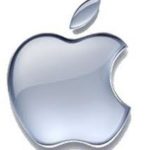“Ad spend tends to follow eyeballs” has to be one of the more memorable quotes of 2016! It belongs to Will Fisher – eMarketer analyst and author of their report in March this year on Mobile advertising spend forecasts.
Fisher continued by saying that “with mobile time accounting for an ever greater proportion of the average UK consumer’s media day, it’s little wonder that mobile ad spend has hit this milestone and is driving the digital total.”
The milestone he refers to is the anticipated 35% surge in mobile ad spending during 2016. Mobile ad spending is also set to surpass desktop media investment and hit £4.58bn this year, accounting for 27% of total UK media budgets. This trend is set to continue, with mobile ad spending potentially reaching £8.99bn by 2020 as compared to projected desktop ad spend of £3.17bn.
It remains to be seen how accurate these numbers are for 2016 and whether the forecasts for 2020 are revised upwards or downwards, but one thing is for sure – the future is mobile! In recognition of this, digital giants such as Google, Facebook, and Microsoft are continually offering advertisers opportunities to shift their budgets from desktop to mobile devices by introducing incentives such as new mobile bidding features and ad types.
But what does this all mean for your average self-respecting marketer? What do we need to do to make sure that we not only jump on the mobile bandwagon but stay on board as it careers ever faster on its digital journey? What we need to do is not just advertise on mobile devices but also ensure that we track our mobile ads all the way from click to conversion.
If we are devoting a greater proportion of our ad spend to driving mobile traffic then it makes sense to devote a proportional amount of time and resources to tracking conversions from mobile devices. But many advertisers miss out on a significant amount of revenue because they’re not tracking the full customer journey.
There are various tools and techniques around to help you do this. One of these is Google AdWords conversion tracking, which enables you to see how effectively your ad clicks lead to significant customer activity, such as website purchases, phone calls, app downloads, newsletter sign-ups and more.
Note that one item on the above list is the traditional phone call! This can often be overlooked as a key link in the conversion chain, but it makes sense: the smartphone has reintroduced the phone call as part of the way consumers research purchases and engage with businesses online.
If they need more information and have a smartphone in their hand then they may well decide that the easiest and most convenient way to get that information is through calling and having a conversation with a real person.
According to Google,
- 70% of mobile searchers have called a business directly from search results
- 61% of customers think it’s important that businesses give them a phone number to call
- 33% of customers would be less likely to use and refer brands that don’t provide a phone number
This means that our aforementioned self-respecting marketer needs to capitalise on this trend and make it easy for customers to call, and then properly integrate and track these call conversions by using analytics tools, so that they can be accurately attributed in our CPA.
Here are three ways that you can drive phone calls from other channels:
- Call Extensions: enable your customers to “click to call” directly from search ads via a call button within your ads. This gives customers the option either to click and call or continue through to your website, but this way you give them the choice of how they’d like to reach you.
- Call-only ads: use these in cases where you really want people only to call and not give them any other options. Both the headline and the call button feature as “click-to-call”
- Give them your number!: Include your phone number in the page description in mobile search results so that mobile users can contact you without needing to load your site.
There are various call tracking tools – for example Mediahawk, – on the market to help you to track the success of these calls and identify which leads originated from which piece of marketing. This will then enable you to allocate more resources to those mobile website visits and ad clicks that provided the calls which converted most efficiently.
Call tracking can also integrate with Google Analytics and AdWords. This means that each phone call generated from a tracked number can be mapped back to the ad group, keyword and campaigns that generated the call. You can then view your calls as events in Analytics and conversions in AdWords enabling you to optimise your mobile advertising spend on the aspects that are performing best.
So as we approach 2017, the future is definitely mobile in every sense of the word! The big question is that if mobile ad spending is a priority for digital advertisers, then accurately tracking and attributing every mobile conversion should also become a priority to ensure that finite resources are being optimised for best results.
Author: Emily Williams
